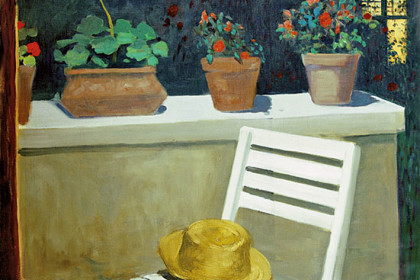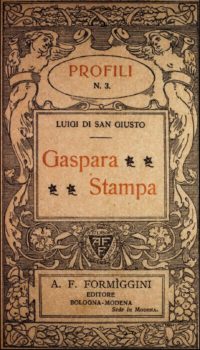
Renato Vernizzi (1904-1972) from a few days is the star of a new museum opened in Parma in the splendid rooms of Palazzo Sanvitale, where is exposed a careful selection of works from the donation of his heirs; a path that begins with the story of an artist who was born in Parma and moved to Milan, continues in its various stylistic phases and, at the end, it introduces in his studio, which was rebuilt with all original materials.
The painter’s onset, that studied at the Academy of Parma, is marked by Autoritratto con cappello of 1924, where there are already signs of accession to that movement, born thanks to Margherita Sarfatti, who characterized Italian art after Futurism, after the end of World War I and before the outbreak of the second war. These were the years of “Twentieth Century“, a return to order and attention to human figure that expands its volume to fill the entire canvas, taking the classic models fiercely contested by the avant-garde of the early century. Many of the works of Vernizzi, in the meantime moved from Parma to Milan, until the early thirties manifest adherence to this stylistic trend, although the painter was never formally part of the movement and in none of his paintings are found those rhetorical and ideological messages so evident in other twentieth century artists.
Renato Vernizzi never even officially joined the Chiarismo movement: always attentive to the chromatic dimension, since 1930 he faded though the palette, preferring the use of white, soft greens, blues dust, according to the preferences of the Lombard artists. The deep linguistic change also meant a deliberately uncertain spelling and a fondness for the color and light with respect to the design: the volumes are dissolved, the prospect is reinvented, impressionistic brushwork is made and the anatomy refers to the ancient canons. As for the subjects, are daily affects first of all, then the landscapes, still lives, those who, according to the theoretical Enrico Persico, allow to highlight “the precariousness of the moment, plunging it in the flow of life”.
In the mid-thirties a long inner meditation brought Vernizzi to change again the style, turning colors, closer to the Fauvism and consolidating independent research that arrived after the Second World War, the direction of the Holy Spirit Gallery: in the works he retrieved the value of black and thereafter elected as his masters Manet, Hals and Velázquez, without forgetting Goya. He resumed the tradition and declined it in his now most famous paintings, the portraits: intense the famous Arturo Toscanini, transparent the writer Ubaldo Bertoli, intimate and immediate those of the beloved sons, Luca and Isabella, loving the one of his wife Maria Theresa.
Vernizzi was an antiliterary painter, an expert of Milanese intellectual environment in which it was always in contact, but which was held at a distance by choosing another path, one that allowed him to capture the immediate life with a painting is not so sentimental but mental, where emotions are always subjected to the scrutiny of thought.
Museo Renato Vernizzi
Strada Cairoli (Palazzo Sanvitale) – 43121 Parma
Ingresso libero
Orari: da martedì a domenica, dalle 10.30 alle 13.00
 English
English  Italiano
Italiano 



